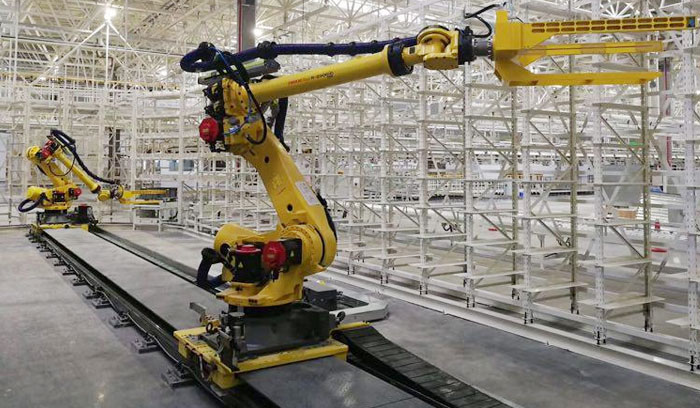

Robots are an indispensable tool in modern automated factories and bulk product production lines. Robots often play an important role in these automation systems, as they are able to increase production efficiency, reduce labor costs, and maintain consistent quality standards in the production process. Each part of the robot plays a different role, of which the seventh axis is one of the important parts of the robot.
The seventh axis, also called the joint, is the last joint in the robot's axis. It's the end of the robot's movement. The seventh axis of the robot comes in many forms, one of which is called the retractable axis. The retractable seventh axis has a certain ability to stretch, allowing it to adapt to different positions and distances when performing tasks. The retractable seventh shaft is made of special materials, and these materials are usually various metal alloys.
The seventh axis of the robot is prone to fatigue and damage due to its frequent movement and high load environment. Therefore, it is very important to choose the appropriate material to improve the service life of the seventh shaft. On this basis, is there a special material that can increase the service life of the seventh axis of the robot and improve the quality and efficiency of the robot itself?
The answer is yes. Now, many robot manufacturers have begun to use high-strength, high-stiffness materials to manufacture the seventh axis, such as titanium alloy, aluminum alloy and so on. These materials have the characteristics of high thermal stability, excellent corrosion resistance and strength, and are suitable for various fields with high strength requirements and long service life.
Titanium alloy is an alloy used in the manufacture of mechanical components, which has the advantages of high strength, high heat resistance and high corrosion resistance. Titanium alloy is usually used in mechanical equipment under extreme conditions such as high temperature and chemical corrosion, and its good performance and high reliability reduce the maintenance cost of the seventh axis parts in the robot, while improving its service life.
In contrast, aluminum alloy is basically a light alloy with excellent corrosion resistance and good machinability. Aluminum alloy is usually used in the manufacture of mechanical parts, with light weight, high strength, good toughness and other characteristics. Although this material may not be as good as titanium alloy, its cost advantages such as cheap price and low processing cost have made it widely used in the manufacture of the seventh axis.
In short, the use of special materials for the seventh axis of the robot can increase its service life, reduce the cost of the entire production line, reduce quality issues, and improve production efficiency. Although different materials have different properties in different application environments, the trend of use of titanium alloy and aluminum alloy is gradually becoming the choice of robot manufacturing. With the continuous progress of robotics technology and the continuous expansion of application scenarios, the research and development and improvement in the field of seventh axis materials will also continue to meet the increasingly high requirements for robot use.


No. 3, Guangda Road, Zhitang Industrial Park, Changshu City